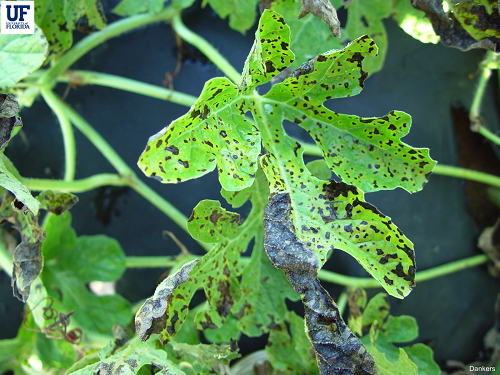By Clint Thompson
What was inevitable has now become reality for North Florida watermelon producers – downy mildew disease in this year’s crop.


Bob Hochmuth, University of Florida Institute of Food and Agricultural Sciences (UF/IFAS) regional specialized Extension agent in Live Oak, Florida, confirmed the presence of the disease in Levy County during his weekly email alerts.
“It’s something that we don’t always get, but most years we do expect it to appear before we get very far into the harvest season. This week is almost exactly the same week in May that it occurred last year in our first sample. It’s not a surprise by any means,” Hochmuth said. “It puts us all on high alert. I was hoping that we would get another week or two and then it wouldn’t be that big of a deal, but it’s early enough in the harvest season that I think most farms will have to deal with it.”
Hochmuth encourages growers to scout their fields regularly. Growers are likely to initiate a plan of action due to downy mildew’s propensity to spready quickly. The disease was discovered in a watermelon field in Levy County but is expected to move north to Suwanee, Lafayette, Columbia, Madison and Union counties.
“I think in most instances, especially in the southern part of the region where the majority of the acreage is located, it’s such a difficult disease and so fast-paced, giving it the nickname ‘Wildfire,’ in most cases, growers will want to initiate a preventative control and not get behind. It’s one of those that it’s really, really difficult to stop once the infestation gets going,” Hochmuth said.
Effective fungicides are available. These include Ranman, Orondis, Ultra or Zampro. All three have a zero-day pre-harvest interval and should be added to a broader spectrum mancozeb spray plus either Quintec or Procure, for the continued pressure from powdery mildew.










